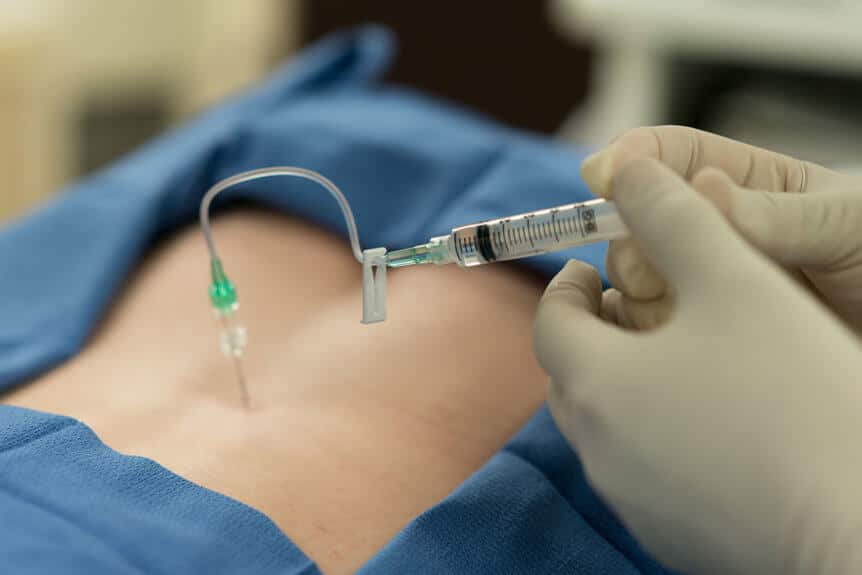
Epidural Steroid Injections: What to Expect
Share this Post
Epidural steroid injections are used to treat chronic pain in the back or neck that is not alleviated with more conservative therapies such as NSAIDs (nonsteroidal anti-inflammatory drugs) and targeted exercise. Steroids are powerful anti-inflammatory medications that help decrease swelling and pressure on the nerves. Hence, epidural steroid injections may be used for a wide variety of conditions, including but not limited to:
- Degenerative disc disease
- Herniated discs
- Osteoarthritis of the spine
- Radiculopathy
- Sciatica
- Spinal stenosis
Please note that epidural steroid injections treat the pain and inflammation caused by the underlying disorder, but they do not treat the condition itself. If the underlying disorder can be corrected, it should be. For those living with chronic pain from an ongoing spinal problem, though, epidural steroid injections can have a dramatic positive impact on the quality of life.
How Is an Epidural Steroid Injection Performed?
After administering local anesthetic, your doctor will use a live x-ray, or fluoroscope, to pinpoint the proper spot in the epidural space. The epidural space is where the spinal nerves are located. Your doctor will insert a thin, bent needle and inject a contrast dye to ensure that it is positioned precisely. He or she will then inject a combination of anesthetic and corticosteroids into the space.
Is It Painful?
Some people report that the initial injection of anesthetic stings, but epidural steroid injections are generally well-tolerated. You may be nervous about possible pain, and IV sedation is available if desired, but most people do quite well without it. If you do choose IV sedation, you will need to avoid eating or drinking for eight hours prior to your procedure, and you must bring someone with you to drive you home. Note that if you take medication for a heart condition or high blood pressure, you should take it as normal with a small sip of water.
You may experience some muscle spasming during or shortly after the injection, though this is uncommon. In one to two hours, after the anesthetic wears off, expect a temporary return to your baseline pain level. Relief generally starts to set in by the next day, and maximum benefit is typically achieved within three to five days after the injection.
Preparing for Your Injection
If you will not receive sedation, you do not need to fast, though it would be unwise to eat a large meal right before your injection. Eat lightly and avoid foods that tend to upset your stomach. If you are on any type of blood thinner, talk to the doctor who manages your medication. You may need to discontinue certain medications a few days in advance, but only under the advice of the prescribing physician.
After the Injection
If you had IV sedation, plan to rest for the remainder of the day, as you will likely be groggy and out of it. Do not drive or operate machinery for the rest of the day.
If you did not have IV sedation, you are free to go about your day. It is best to take the day off work and avoid strenuous activities, but there are no real restrictions. If you experience pain at the injection site, applying an ice pack for 20 minutes at a time can help.
If you have diabetes, you may notice a temporary increase in your blood sugar for a few days. Monitor your blood sugar carefully and be ready to treat any spikes. It should return to normal shortly.
Side Effects
Although epidural steroid injections are generally very well tolerated, minor side effects are not unusual. You may experience a temporary “steroid flush,” which may include facial reddening, sweating, and a low-grade fever. Nausea and itching or a mild rash are also fairly common. These side effects typically resolve with a few days.
Serious complications are extremely rare, but they are possible with any medical procedure. If you have significant bleeding or swelling at the injection site or experience signs of infection such as a high fever, redness and warmth at the injection site, or severe pain, call us right away or go to the nearest emergency room.
Can Epidural Steroid Injections Be Repeated?
Yes. Depending on the exact nature of your pain and the underlying condition causing it, you may need two or even three injections to receive maximum benefits. Pain relief from epidural steroid injections typically lasts for 12 to 18 months, but some people need a “tune up” a bit sooner. Epidural steroid injections can be administered three to four times per year if needed.
Ready to Get Started?
If you are ready for a new, fully integrated approach to health and wellness, contact CORE Medical & Wellness today at 888-521-0688 to learn more or schedule your appointment!
Dr. Richard Kang is double board certified in anesthesiology and pain medicine, and he completed an interventional pain medicine fellowship at the prestigious New York Presbyterian Hospital / Columbia University – College of Physicians and Surgeons. Read his full bio here.
